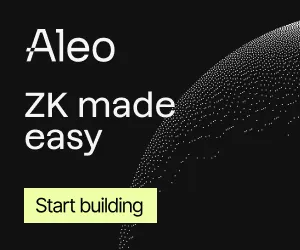In brief
- Midnight Network will hand out its NIGHT token to holders of Bitcoin, Ethereum, XRP, Cardano, and more.
- The privacy-focused blockchain will make 100% of its 24 billion tokens available to claimers.
- Eligible users include those with at least $100 worth of supported assets as of a June 11 snapshot.
Midnight Network, a privacy and data protection blockchain with connections to Cardano, will offer NIGHT tokens to users of Bitcoin, Ethereum, Solana, and other major networks as part of its launch airdrop.
The protocol revealed its two-token system and “Glacier Drop”—a multi-phase token distribution event—plans in a 45-page tokenomics white paper on Monday.
“Traditional tokenomic models rely on a single token and require users to spend tokens for every transaction, creating economic uncertainty due to token price volatility,” the paper reads. “Further, their initial token distributions often favor insiders and early investors, concentrating control among a small group while failing to provide the opportunity for broad, meaningful community participation.”
To combat this, Midnight is providing up to 100% of its NIGHT token supply to its first token distribution phase–the Glacier Drop. During this phase, holders of more than $100 worth of the native tokens behind Cardano (ADA), Bitcoin (BTC), Ethereum (ETH), XRP Ledger (XRP), Solana (SOL), BNB Chain (BNB), Avalanche (AVAX), or Basic Attention Token (BAT) as of a June 11 snapshot will be eligible to claim NIGHT tokens.
Of the 24 billion tokens available, 50% will be set aside for holders of ADA on Cardano, 20% is allocated to Bitcoin, and the remaining 30% will be split among the other eligible blockchains.
Though claimable, these tokens will not all be tradable right away, and instead will need to “thaw” or vest in 25% increments every 90 days, for a total of 360 days.
“During Glacier Drop, claimed tokens are allocated to eligible claimants, but are initially frozen (locked) in a redemption smart contract on the Cardano network, and will not be transferable before they gradually thaw (unlock) during the Redemption period,” the incentive paper reads.
Technically, 100% of the supply could be claimed during the token’s initial distribution phase, though it’s unlikely that all eligible users will claim theirs by the deadline. Cardano’s Charles Hoskinson previously indicated that the airdrop could reach as many as 37 million users when speaking at Consensus 2025 in May, but the token’s documentation does not make mention of the eligible user count.
Any unclaimed NIGHT tokens will then move into a second phase called the Scavenger Mine. During this phase, anyone who wishes to participate in the network by providing computational power can earn NIGHT tokens proportionally to the amount of power they provide.
Last but not least, a final Lost-and-Found phase will allow eligible users from the Glacier Drop phase to claim a portion of their tokens in the event they missed the first distribution phase. Any tokens unclaimed after a four-year period will be allocated to the protocol’s on-chain treasury.
Midnight Network’s privacy focus uses zero-knowledge proofs to securely allow for the selective disclosure of data, shielding wallets and transaction data while offering secure access to those who need it.
The network is currently live on testnet. According to a timeline provided in the network’s incentives paper, its mainnet launch would not come until 90 days after the Glacier Drop. In addition to the NIGHT token, Midnight will also utilize a DUST token to execute transactions.
A representative for the Midnight Foundation did not immediately respond to Decrypt’s request for comment on the rollout of the Glacier Drop.
Edited by Andrew Hayward



